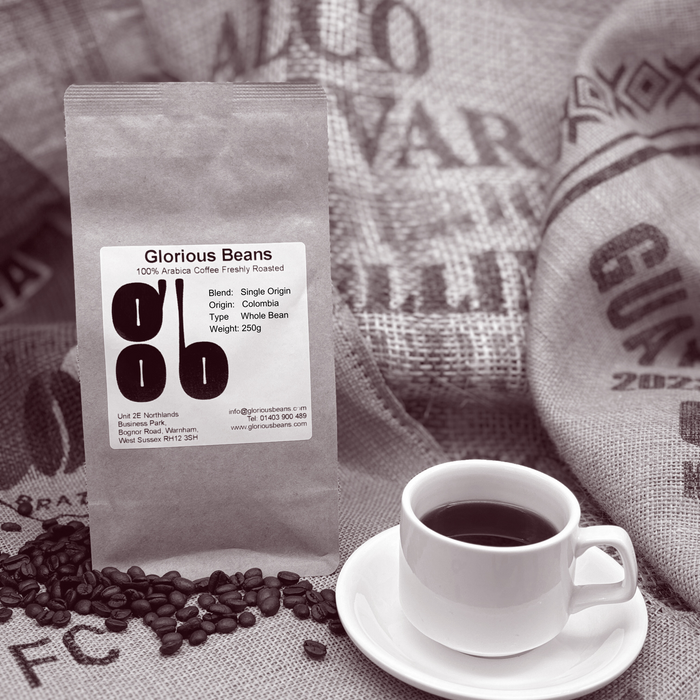The Coffee Lover’s Guide to SOE Single Origin Espresso Varieties
The Coffee Lover’s Guide to SOE Single Origin Espresso Varieties
Blog Article
Understanding Coffee Beans: the Journey From Coffee to Blended Coffee Beans

The Beginnings of Coffee: A Worldwide Point Of View
While you may think about coffee as a contemporary staple, its beginnings map back centuries, intertwining with cultures around the world. The story begins in Ethiopia, where legend says a goat herder named Kaldi uncovered the stimulating effects of coffee beans after observing his goats frolicking energetically after eating them. This sparked rate of interest, bring about coffee's infect Arab investors who valued the made beverage. By the 15th century, it reached Persia, Egypt, and Turkey, where coffee shops ended up being social hubs for conversation and society.
As trade routes broadened, coffee made its method to Europe in the 17th century, swiftly getting appeal. It changed from a mystical beverage right into an everyday ritual, motivating celebrations and intellectual exchanges. Each culture added its distinct twist to coffee prep work, enhancing its history. This international trip highlights how coffee attaches us, transcending borders and uniting diverse traditions through a basic bean.
Cultivation and Harvesting of Espresso Beans
As coffee's journey progressed, the emphasis changed to the cultivation and harvesting of specific bean ranges, specifically those utilized for espresso. You'll discover that coffee beans usually come from Arabica or Robusta plants, each offering distinctive flavors. The excellent expanding problems consist of high altitudes and rich, well-drained soil, which boost the beans' top quality.
Throughout the harvest, selecting techniques vary. In some areas, workers hand-pick ripe cherries, guaranteeing just the finest fruit mosts likely to handling. In various other locations, mechanical farmers are made use of, particularly on bigger ranches. Timing is important; you wish to harvest when the cherries get to peak ripeness for optimum taste.
When harvested, the beans are prepared for handling, which is important in identifying their final preference. Recognizing the growing and collecting procedures provides you insight into what enters into your favorite espresso, enriching your recognition for each mug.
Handling Methods: From Cherry to Bean
Since you have actually learnt more about gathering espresso beans, allow's check out exactly how those cherries transform right into the coffee beans you love. You'll see how various harvesting methods effect taste, complied with by the vital steps of fermentation and drying out. Lastly, we'll break down the milling and grading process that establishes your coffee's high quality.
Collecting Strategies Discussed
When it comes to coffee, understanding harvesting methods is crucial, given that they directly affect the taste and high quality of the beans you take pleasure in. Discerning selecting includes hand-picking only ripe cherries, ensuring you get the best quality beans. Ultimately, the selection of gathering technique can significantly influence your coffee experience, so it's worth knowing how those beans made it to your cup.
Fermentation and Drying Out
After collecting, the following actions in handling coffee beans play a substantial function in shaping their flavor. You'll find that fermentation is essential, as it aids damage down the mucilage bordering the beans, improving their preference account. Depending upon the technique, this procedure can last from a couple of hours to a number of days, with differing outcomes based upon temperature and humidity.
Once fermentation is full, drying out adheres to, which is just as vital. You can select from sun-drying or mechanical drying methods. Sun-drying allows the beans to soak up tastes from the setting, while mechanical drying out warranties constant wetness degrees regardless of climate. Proper drying is necessary to protect against mold and mildew and preserve the beans' quality, inevitably influencing your mug of coffee.
Milling and Grading Refine
As fermentation and drying set the phase for flavor development, the milling and grading procedure guarantees that only the finest coffee beans make it to your mug. This phase includes getting rid of the external layers of the coffee cherry, including the parchment and husk. After milling, the beans are arranged by size and weight, guaranteeing an uniform quality. You'll locate that grading assists determine defects and categorize beans, which affects taste and aroma. Premium beans obtain a higher grade, causing a richer coffee experience. Once graded, the beans are prepared for product packaging and delivery, preserving their distinct features. This thorough process is important for supplying the outstanding preference you enjoy in every sip of your preferred mixture.
Toasting Techniques: Unlocking Flavor Possible
When you roast coffee beans, the technique you select can dramatically affect the taste profile. Recognizing the connection in between time, temperature level, and roasting methods is vital to disclosing the possibility of your brew. Allow's discover exactly how these aspects integrated to create the ideal mug.
Toasting Approaches Discussed
While you may believe that all coffee toasting approaches generate the very same outcomes, the truth is that each technique reveals one-of-a-kind taste potentials in the beans. You can select in between approaches like drum toasting, air roasting, or even conventional frying pan roasting. Drum toasting uses a revolving drum to equally distribute heat, boosting caramelization and generating a well balanced taste. Air roasting, on the other hand, flows warm air around the beans, advertising a lighter roast with pronounced acidity. Pan roasting allows for hands-on control however needs constant interest to prevent burning. Each approach has its nuances, so trying out with different strategies can help you uncover the ideal roast that straightens with your taste preferences. Appreciate the trip of locating your optimal mug!

Effect On Taste Account
Different toasting techniques not just influence the procedure yet likewise considerably influence the taste account of the coffee beans. Dark roasts, on the various other hand, bring out bold, smoky flavors, in some cases concealing the bean's unique qualities. Comprehending these nuances assists you value the virtuosity behind your cup of coffee, enhancing your overall experience with every sip.
Time and Temperature Level Elements
To release the full taste potential of coffee beans, both time and temperature during the roasting process play significant functions. When toasting, you'll discover that higher temperatures can quickly create tastes, however if you rush it, you might wind up with burnt notes. Conversely, reduced temperature levels enable for a much more gradual flavor development, showcasing the beans' distinct features.

Timing is equally as crucial; prolonging the roast too long can bring about a loss of level of acidity and brightness, while also short a roast could leave the beans underdeveloped. Discovering that sweet area needs practice and trial and error. By changing these factors, you can disclose the rich, intricate flavors hidden within each bean, developing a really exceptional coffee experience.
The Art of Blending: Crafting One-of-a-kind Coffee Accounts

Begin by picking a base coffee that provides a strong structure. Choose complementary beans to boost particular flavor notes. An intense Ethiopian bean can bring fruitiness, while a rich Brazilian coffee adds body. Testing is vital-- don't be afraid to change proportions until you discover your suitable account.
As you blend, remember that each combination tells a story. You're not simply making coffee; you're creating an experience. So, take your time, preference often, and appreciate the trip of discovering your signature blend.
Brewing Techniques: How Preparation Influences Taste
Blending coffee opens up a domain of taste possibilities, yet how you make that mix can significantly affect your final mug. Different brewing methods draw out one-of-a-kind flavors and scents, so it's crucial to choose carefully. A French press permits oils and debris to stay, producing an abundant, robust experience. On the various other hand, a pour-over highlights the coffee's clearness and brightness, ideal for showcasing delicate notes.
Espresso, with its high stress, generates a focused shot that highlights sweet taste and crema. If you choose a lighter brew, take into consideration a cool mixture technique; it generates a smooth, less acidic preference.
Readjusting variables like water temperature level, grind dimension, and make time can transform your coffee's account. Embrace the art of brewing to find the tastes hidden in your coffee blends.
The Future of Coffee: Sustainability and Advancement
As the coffee industry progresses, sustainability and innovation are ending up being necessary for addressing environmental difficulties and conference customer needs. You'll discover that even more coffee companies are taking on green methods, from sourcing beans morally to carrying out lasting farming techniques. These changes not only assist the earth however additionally enhance the top quality of the coffee you delight in.
You might see technologies like naturally degradable product packaging and water-saving brewing methods that lower waste. Advanced innovation, such as blockchain, is additionally coming to be popular, ensuring openness in the supply chain, which enables you to map your coffee back to its beginnings.
Furthermore, buying local areas and supporting farmers via fair profession efforts cultivates a much more sustainable coffee community. As you sip your following cup, remember that your selections can contribute to a brighter future for coffee. By deciding for sustainable brand names, you're not simply taking pleasure in a drink; you're making a positive influence on the globe.
Often Asked Inquiries
What Is the Distinction In Between Arabica and Robusta Beans?
Arabica beans are smoother, sweeter, and have a greater acidity, while robusta beans are stronger, more bitter, and have more high levels of caffeine. You'll discover these distinctions in flavor and aroma when making your coffee.
How Does Elevation Affect Coffee Bean Flavor?
Elevation effects coffee bean taste significantly. Higher altitudes produce beans with brighter level of acidity and complex tastes, while lower elevations commonly yield beans that are larger and less nuanced. You'll observe these differences in your Single Origin Espresso mug!
What Are the Health And Wellness Benefits of Drinking Coffee?
Consuming coffee can improve your energy, enhance mental focus, and also enhance physical efficiency. It's abundant in antioxidants, might lower the threat of specific conditions, and can promote a healthier metabolic rate when consumed in small amounts.
Can Coffee Beans Be Recycled for Brewing?
Yes, you can reuse coffee beans for developing, but the flavor may be weak. If you delight in trying out, try reusing them in different means, like cold mixtures or including to shakes for an additional kick.
Just how Should I Shop Coffee Beans for Freshness?
To maintain your coffee beans fresh, save them in a closed container in an amazing, dark place. Stay clear of revealing them to light, dampness, or warmth, as these elements can promptly degrade their flavor and scent.
Comprehending Coffee Beans: the Trip From Espresso to Blended Coffee Beans.
Currently that you've found out about collecting espresso beans, allow's explore how those cherries change into the coffee beans you like.When you roast coffee beans, the approach you choose can substantially influence the taste account - Single Origin Espresso.While you could assume that all coffee roasting methods yield the exact same outcomes, the fact is that each technique exposes special flavor capacities in the beans.Different toasting approaches not just affect the process but also greatly impact the taste account of the coffee beans
Report this page